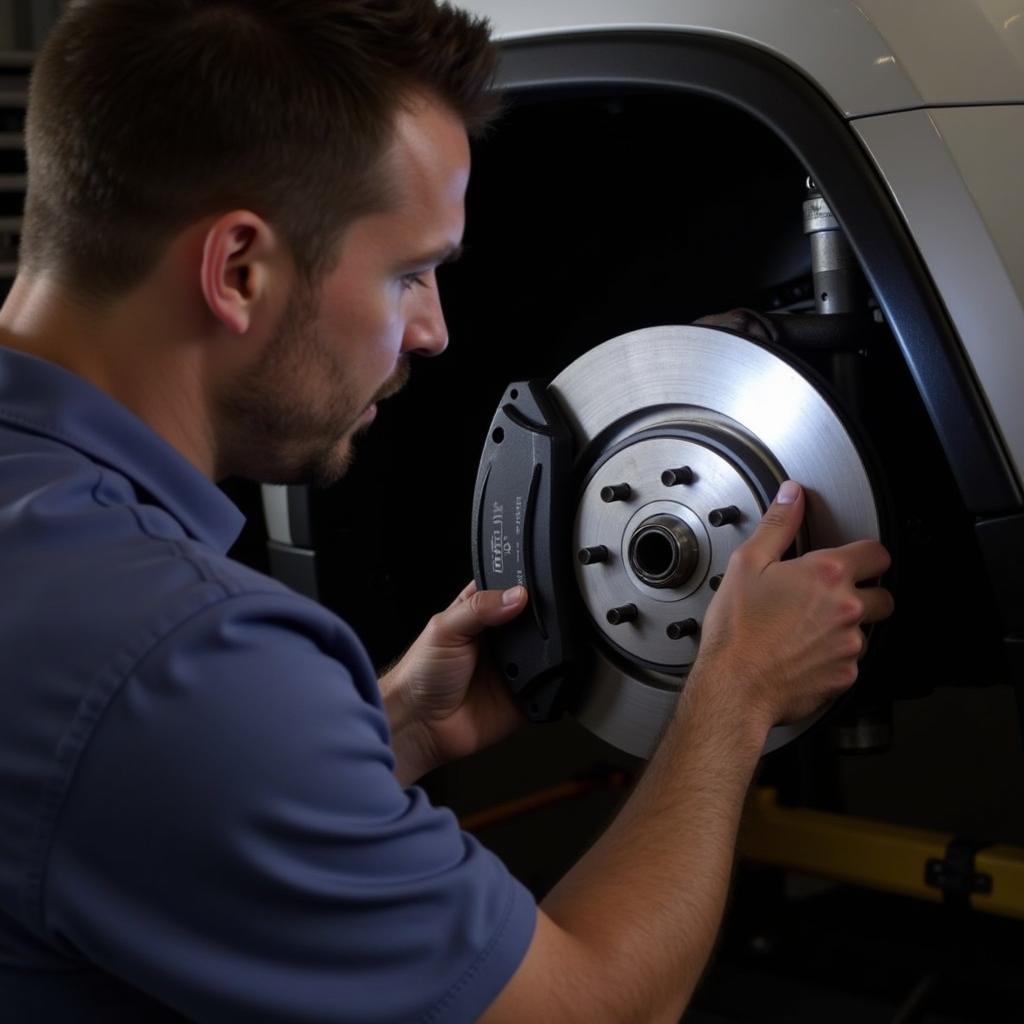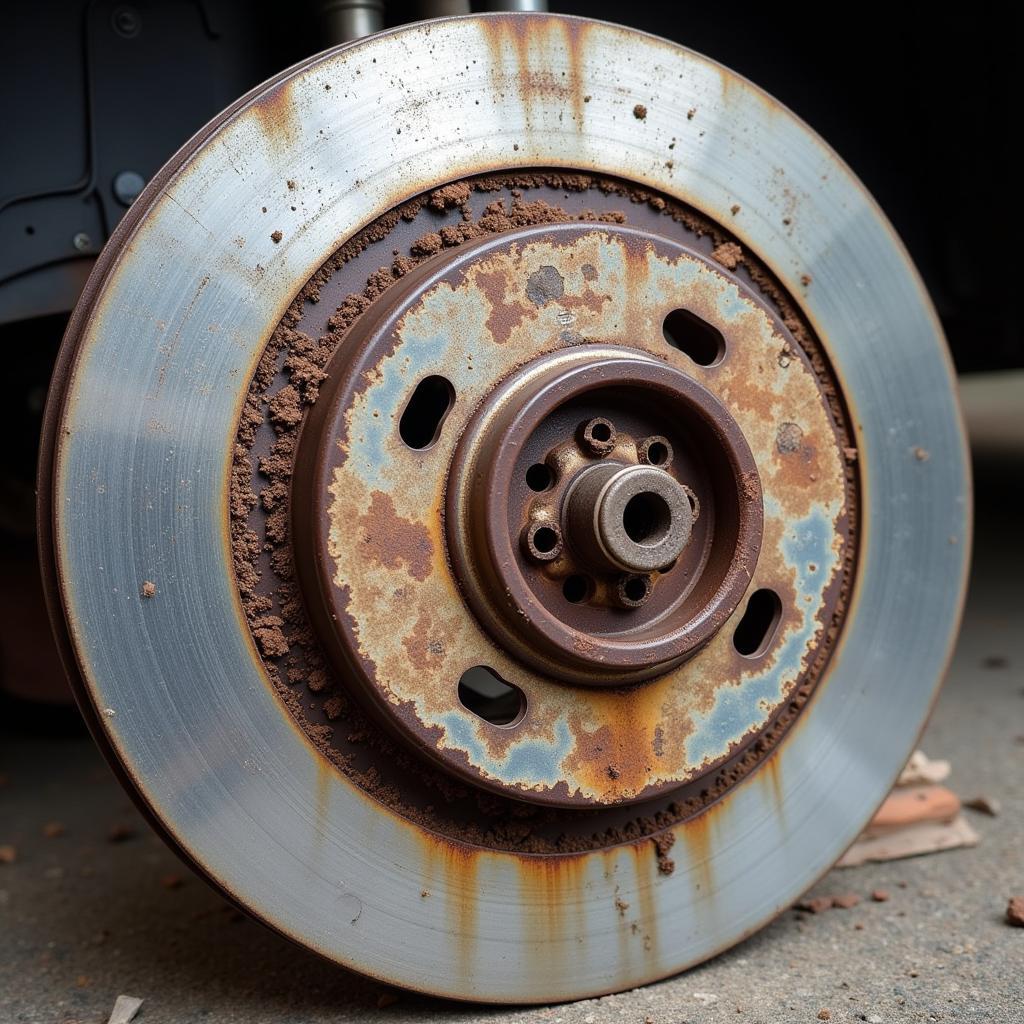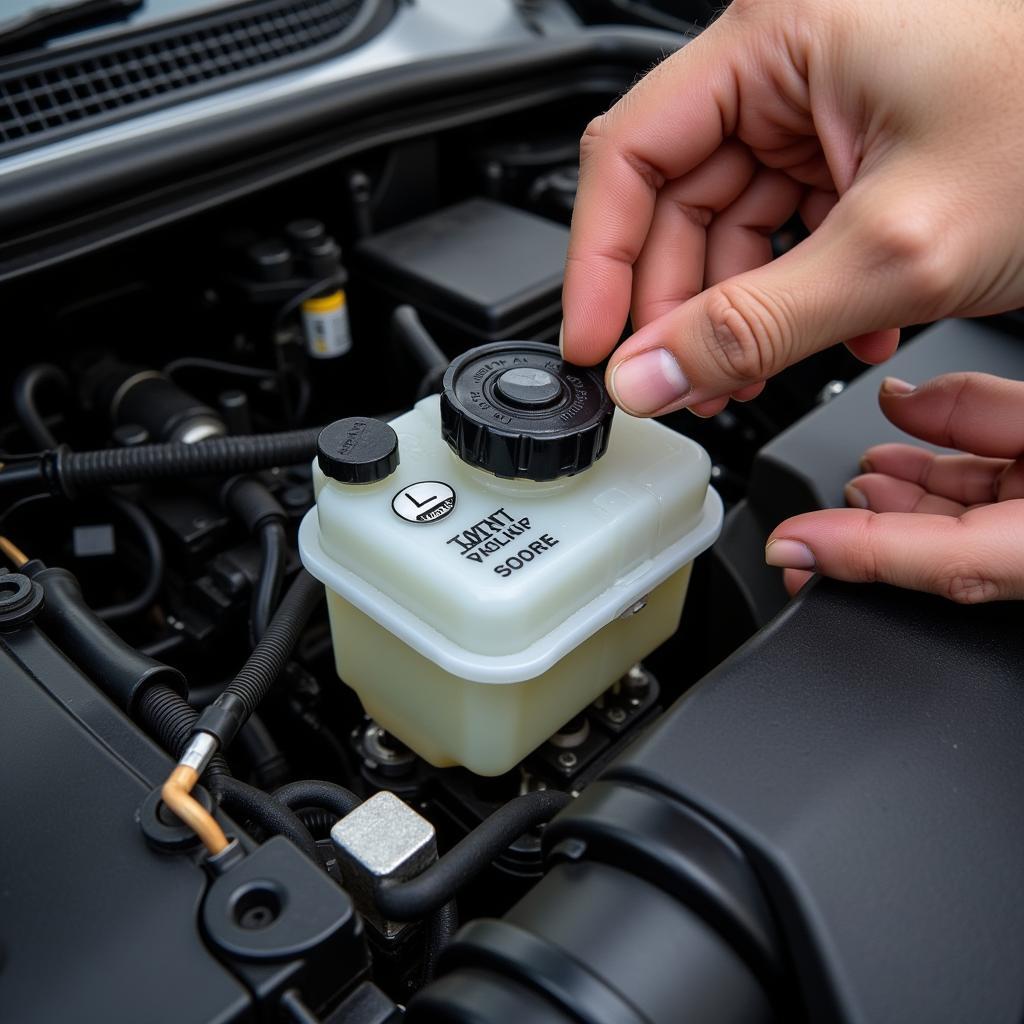The 2013 Jeep Grand Cherokee brake warning light can be a frustrating issue, signaling anything from a simple parking brake engagement to more serious problems. Understanding the potential causes and solutions can save you time and money, and potentially prevent dangerous driving situations. This article will guide you through diagnosing and fixing your brake warning light issue, offering professional insights into remote software diagnostics, programming, and installations.
Understanding Your Jeep’s Brake Warning Light
The brake warning light is part of your vehicle’s safety system, designed to alert you to potential issues within the braking system. In the 2013 Jeep Grand Cherokee, this light can illuminate for several reasons, ranging from low brake fluid to more complex ABS module malfunctions. Ignoring this warning could lead to decreased braking performance and potentially dangerous driving conditions.
Common Causes of a 2013 Jeep Grand Cherokee Brake Warning Light
Several factors can trigger the brake warning light in a 2013 Jeep Grand Cherokee. These include:
- Low Brake Fluid: This is the most common cause. Low brake fluid often indicates a leak somewhere in the system.
- Worn Brake Pads: As brake pads wear down, the brake fluid level drops, potentially triggering the warning light.
- Faulty Brake Sensor: A malfunctioning sensor can incorrectly signal low brake fluid or other braking issues.
- ABS Module Issues: Problems with the Anti-lock Braking System (ABS) module can also trigger the warning light.
- Parking Brake Engaged: Sometimes, the simplest explanation is the right one. Make sure your parking brake is fully released.
Diagnosing the Problem
Accurately diagnosing the issue is crucial for effective repair. Here’s a step-by-step guide:
- Check the Parking Brake: Ensure the parking brake is fully disengaged.
- Inspect Brake Fluid Level: Check the brake fluid reservoir. If the level is low, add brake fluid to the recommended level. If it continues to drop, you likely have a leak.
- Inspect Brake Pads: Visually inspect the brake pads for wear. If they are thin, they need replacement.
- Check for Error Codes: Using a diagnostic scanner, check for any stored Diagnostic Trouble Codes (DTCs) related to the braking system. This can pinpoint specific issues, especially with the ABS system.
 Inspecting Brake Pads on a Jeep Grand Cherokee
Inspecting Brake Pads on a Jeep Grand Cherokee
Remote Diagnostics and Software Solutions
In some cases, the brake warning light may be related to software glitches within the vehicle’s control modules. Remote diagnostics and software programming can offer efficient solutions to these issues.
“Remote diagnostics allow us to quickly identify and address software-related problems without the need for a physical visit to the workshop,” says John Miller, Senior Automotive Diagnostic Technician at Advanced Auto Solutions. “This saves time and money for the customer, and often resolves the issue more efficiently.”
When to Seek Professional Help
While some brake warning light issues can be addressed with simple DIY solutions, others require professional expertise. If you’ve checked the basics and the light persists, or if you’re unsure about performing any of the diagnostic steps, it’s best to consult a qualified mechanic. They can perform a thorough inspection, diagnose the problem accurately, and implement the necessary repairs.
Preventing Future Brake Warning Light Issues
Regular maintenance is key to preventing future brake warning light issues. This includes:
- Routine brake inspections
- Timely brake pad and rotor replacements
- Regular brake fluid flushes
“Regular maintenance is the best way to avoid unexpected brake problems and ensure optimal braking performance,” adds Miller. “It’s a small investment that can save you from costly repairs and potential safety hazards down the road.”
Conclusion
The 2013 Jeep Grand Cherokee brake warning light is a crucial safety indicator. Understanding its potential causes and solutions can help you address the issue quickly and effectively. By following the diagnostic steps outlined in this article and seeking professional help when necessary, you can maintain your vehicle’s braking system and ensure safe driving conditions.
FAQ
- Can I drive my Jeep if the brake warning light is on? It’s not recommended. While you might still have some braking power, it could be significantly reduced. Get it checked immediately.
- How much does it cost to fix a brake warning light issue? The cost depends on the underlying cause. A simple brake fluid top-up is inexpensive, while more complex repairs like ABS module replacement can be significantly more costly.
- How often should I check my brake fluid? Check your brake fluid level at least once a month.
- How often should I get my brakes inspected? It’s recommended to have your brakes inspected at least once a year or every 12,000 miles.
- What is a brake sensor? A brake sensor is a small electronic component that monitors the brake system and sends signals to the vehicle’s computer.
- Can I replace my brake pads myself? While it’s possible, it’s recommended to have this done by a qualified mechanic.
- What is remote software programming? It’s a process where software updates or fixes are installed in a vehicle’s control modules remotely, often via an internet connection.


